The
Piazza del Plebiscito is an immense paved area across which the domed San
Francesco di Paola church and the Palazzo Reale (Royal Palace of Naples) face
each other. The area was once covered
with a conglomeration of buildings, but this arrangement proved offensive to
Joachim Murat, Napoleon’s brother-in-law, who found himself ruling
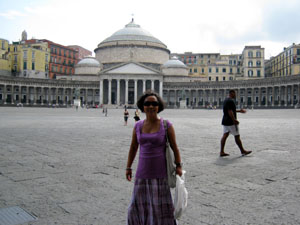 Nella and Piazza |  Bob and Piazza |
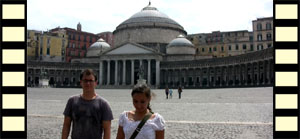 Piazza del Plebiscito HD Video (20.6 MB) SD Video (7.9 MB) | 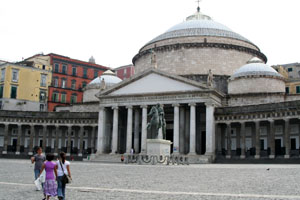 San Francesco di Paola Church |
 Statue of Ferdinand I (by Antonio Calý) | 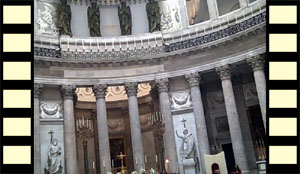 Inside San Francesco di Paola (SD Video, 9.1 MB) |
Automobiles are not allowed in the Piazza
these days, and the youth of
Construction on the Palazzo Reale began in 1600 but wasn’t completed until 1843. As one would expect of a royal palace, it’s full of magnificent rooms. Again, they accepted the ArteCard, and like the Castel Sant’ Elmo, they let us in for free. It appeared that photography was against the rules, so we didn’t take very many pictures while inside.
 The Palazzo Reale | 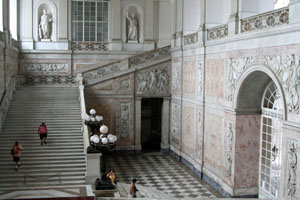 The Monumental Staircase |
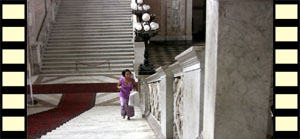 Climbing the Staircase HD Video (20.7 MB) SD Video (6.3 MB) | 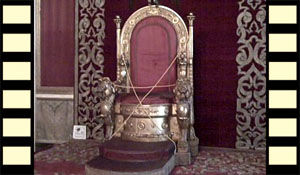 The Throne Room (SD Video, 9.7 MB) |
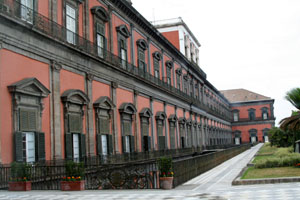 The Roof Garden | 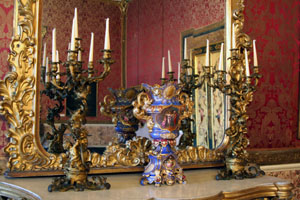 Mantel, Luca Giordano's Room |
 The Hall of Hercules (SD Video, 4.7 MB) | 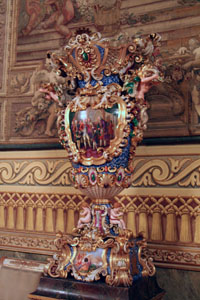 French Vase, Hall of Hercules |
The fašade was fair game, though, so we took
several pictures of the niches containing statues of several of the most
well-known kings of
 Eastern Fašade |  Outside the Palace HD Video (18.8 MB) SD Video (8.6 MB) |
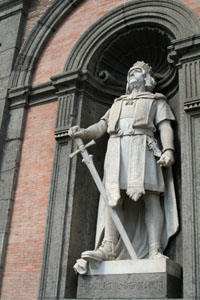 Roger II (Ruggiero il Normanno), 1095-1154 | 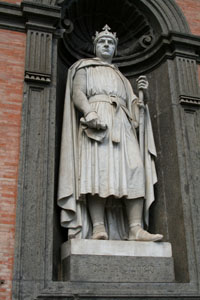 Charles I (Carlo d'Angio), 1226-1285 |
Near the Piazza is the medieval-looking Castel Nuovo, originally built in the 13th Century, and then completely rebuilt in the 15th Century. It was called nuovo, or new, to distinguish it from the other castles in town, which were less new. The castle has five large cylindrical towers made of darker stone from the rest of the structure and an archway (the Arco di Trionfo) which is quite impressive, but doesn’t seem to match anything else in the castle architecturally, despite being built around the same time.
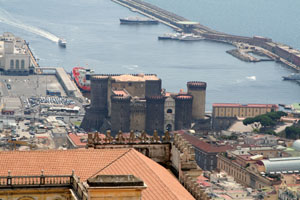 Castel Nuovo from Castel Sant'Elmo | 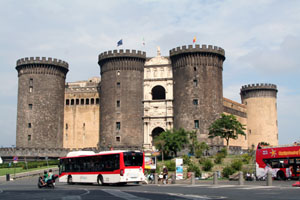 Castel Nuovo |
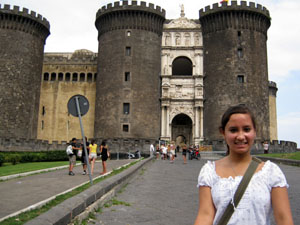 Connie and Castle | 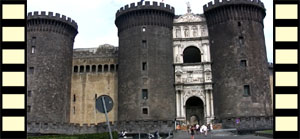 Castel Nuovo HD Video (18.4 MB) SD Video (7.0 MB) |
 Arco di Trionfo (Top) | 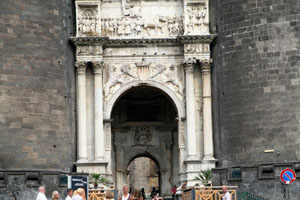 Arco di Trionfo (Bottom) |
 Via Toledo | 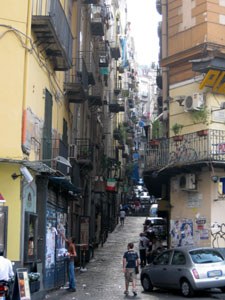 The Spanish Quarter |
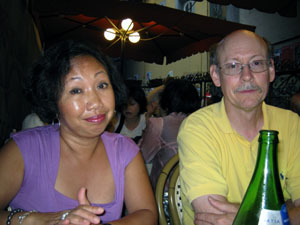 Nella and Bob at Dinner | 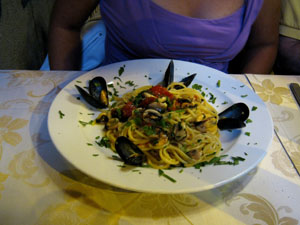 Seafood Pasta |
There was much we didn’t see in and around
